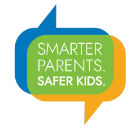Child Sexual Abuse Prevention
Efforts to Prevent Child Sexual Abuse
Child Sexual Abuse is a preventable Public Health Problem
Children who experience CSA are at risk for a lifetime of adverse outcomes including poor physical and mental health, poor interpersonal relationships, and increase the potential for future victimization. The prevention of CSA is unique, complex and multifaceted. To effectively prevent CSA, we believe, requires the coordinated effort of multiple sectors within a community.
The CDC reports that 1 in 5 females and 1 in 13 males are victims of child sexual abuse before age 18. Sexual abuse is associated with life-long biopsychosocial consequences and has a lifetime economic burden estimated to exceed $9.3B. Prevalence rates remain largely unchanged for the last 20 years, indicating that primary prevention efforts have stagnated and are in need of innovation. A central focus of the Center for Safe and Healthy Children is stopping sexual abuse before it happens.
Safe and Healthy Communities Initiative
Recognizing the sexual abuse prevention will necessarily require the coordinated efforts within the entire community, a central focus of the Center for Safe and Healthy Children is the coordinated strategies of schools, parents, and community members that will enhance safety for all children.

Through a unique university/state partnership with the Pennsylvania’s Commission on Crime and Delinquency we devised, implemented, and are currently evaluating a 3-pronged effort—the ongoing Safe and Healthy Communities Initiative—to impact rates of child sexual abuse and exploitation across Pennsylvania.
The Safe and Healthy Communities Initiative includes implementing evidence-based community awareness to 5% of the adult population, a school-based program to reach 100% of second graders, and our parent-focused program delivered to parent who are served by Pennsylvania’s General Protective Services.
Parent-focused Prevention Efforts
Parents are chief agents of change as well as the most proximal avenues of child safety. And yet, parents have not been fully engaged in primary prevention. The Center for Safe and Healthy Children seeks to fill this marked gap through its efforts to equip parents with skills-based, behavioral strategies to keep their children safe from sexual exploitation and sexual harm both online and offline.

We developed Smarter Parents, Safer Kids, a single-session sexual abuse prevention strategy that can be added to evidence-based parent-education programs already supported by state child welfare systems through the Family First Prevention & Services Act. In a randomized controlled trial, parents who received the intervention showed significant knowledge and behavior gains related to their ability to provide safe environment for their own children as well as for children livening in their environs. This intervention is now the focus of a large grant funded by the National Institutes of Health (PI: Kate Guastaferro) to take this program nationally in partnership with Parents As Teachers.
Internet Safety
Despite the internet’s obvious advantages—it can enhance social contact, is now the chief way we get information, and is an essential tool for educators—several of its features warrant genuine concern. The internet and social media have created new avenues by which children experience internet-initiated victimization and sexual exploitation. Cyberbullying is a major concern of parents, teachers, and kids. Teens and children are intentionally targeted by advertising algorithms on social media platforms. Access to pornography is increasingly unfettered. Yet, there is a dearth of quality research on the impact of the internet on child development and how to protect vulnerable teens.
The Center for Safe and Healthy Children conducts basic science to spark novel interventions to equip children and parents with the skills to create safe online environments.

The TechnoTeens Study
Recent review of current research point out major shortcomings in current internet research that hamper our understanding of the true impact of the internet on youth development: (1) internet activity has been exclusively assessed via adolescent self-reports, (2) research designs are cross-sectional with no ability to assert causal inference, (3) the majority of studies lack adequate control potential confounds, and (4) research should focus on the types and characteristic of Internet use, and not simply on the amount of time teens spend online. Conducted by faculty in the center, the TechnoTeens study is one such attempt to raise the bar in internet safety research.
Featured research published in Nature Human Behavior
In an article in Nature Human Behavior, the researchers assessed actual internet behaviors of teens and followed them longitudinally to track the impact of these behaviors on subsequent internet-initiated victimization. Results showed that indeed time spent on actual social media platforms and pornographic websites impacted cyberbullying, sexual development, and being lured offline by strangers. Teens who experience sexual abuse were particularly vulnerable.



